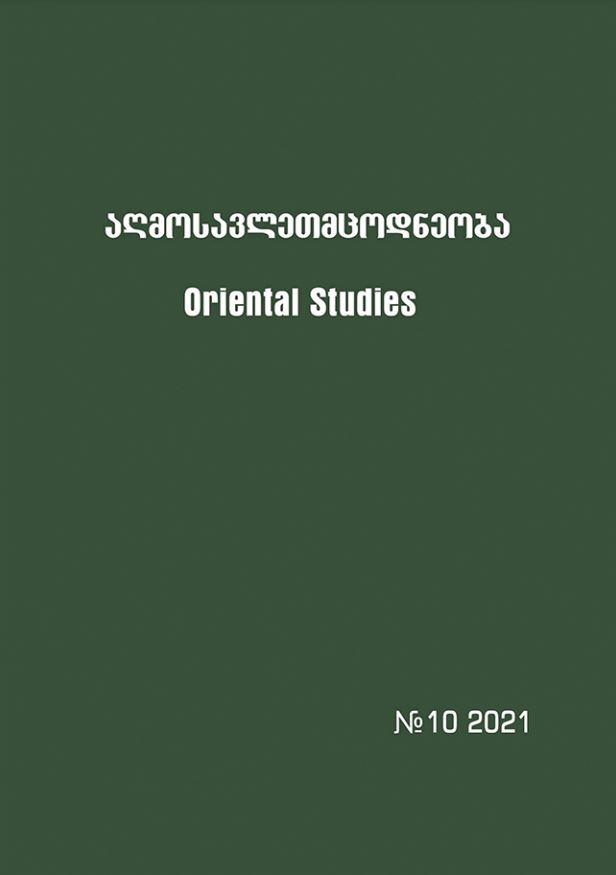On the Issues Concerning the Transliteration of Arabic Personal Names into Georgian
Main Article Content
Abstract
Recently, certain extra-linguistic realities, namely, increased migration flow from Arab countries, intensification of diplomatic relations, enhancement of
cooperation in economic and tourism-related fields between Georgia and the Arab world, have raised the issue of translating Arabic official documents and,
accordingly, the practical need for the elaboration of rules of transliteration of the Arabic personal names into Georgian. The situation is complicated by the fact that interpreters rely not on the source language (Arabic), but the intermediary language (often – English).
The paper deals with the problems arising during the transliteration of personal name prefixed by the definite article al-; issues regarding transliteration
of the Arabic vowels and some specific Arabic consonants; Transliteration of the geminated consonants in the Arabic personal names; transliteration of the socalled Kunya and Nasab.
Transliteration of Arabic personal names into Georgian is complex for many reasons. The absence of a unified system of transliteration is one of the
vital concerns. For instance, names prefixed by the definite article al- take different forms when transliterated into Georgian. First problem is the form of
the article – whether to use al- or its allomorph el-, or whether to distinguish between the so called solar and lunar letters or not. Arabic documents translated into Georgian depict the usage of all enumerated forms. Another problem is the absence of a unified rule of transliterating al- and its following word, whether to mix them or divide by the hyphen. In addition, no unified rule exists for treating compound names consisting of the definite article. To standardize the transliteration of such names, we assume that it is better to use the form al- and to leave al- and the following name divided by the hyphen.
As for the issues concerning transliteration of Arabic vowels, they appear in different forms which lead to variation in transliteration of vowels. To make the rules unified, it is better to depend on the rules of Classical Arabic and to use three fixed vowels rather than their variants.
Concerning some specific Arabic consonants, like (خ، ط، ك، ق (it worth mentioning that interpreters often depend on an English version of a document,
which leads to mistransliteration of these consonants within the framework of Arabic and Georgian language phonetic systems.
Transliteration of the geminated consonants in the Arabic personal names is also problematic. Geminated consonants are sometimes transliterated with one or a double consonant. To standardize the methods of transliteration of such names, it is necessary to consider that Arabic personal names, on their turn, are meaningful words; thus, it is better to transliterate geminated consonants with a double consonant into Georgian.
As for the transliteration of the so-called Nasab, the issue of transliteration of ابن/بن element is problematic. Wide-spread versions are: ben, bin, ibn and bnu. It is recommended to choose bin for names depicted in modern official documents. As for ibn and bnu, it should remain unchanged in traditionally established forms of historical names.
The purpose of the paper is to highlight the problem on the basis of description and analysis of errors commonly confirmed in this field. Presented ways about the solution of the problems can only be regarded as the author's modest suppositions.
